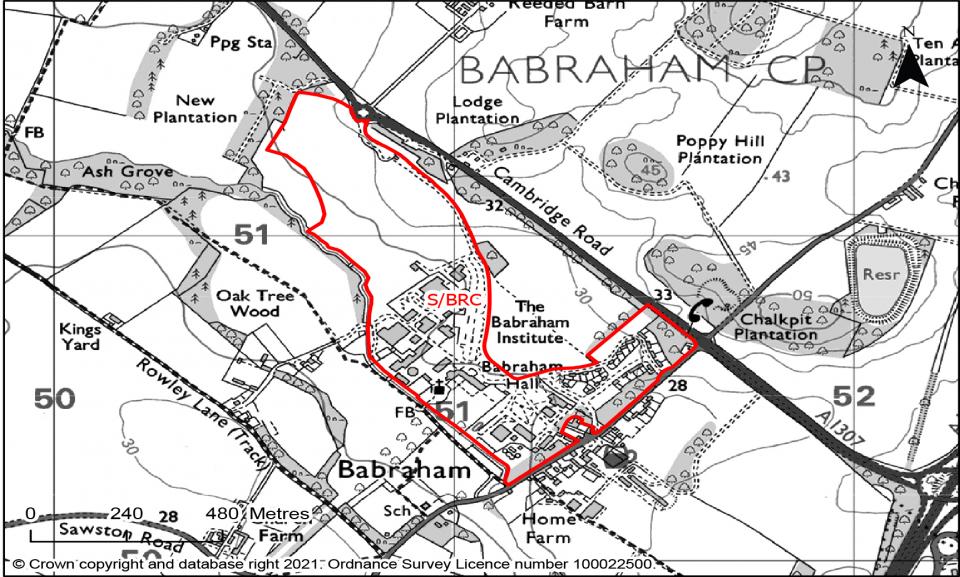
What will this policy do?
This policy will guide future development at the Babraham Campus, to support the continued success of this nationally important facility.
Proposed policy direction
- Remove the developed area of the Campus from the
- Remove from the and allocate an additional area for employment development (research and development) of 17.1 hectares within and adjoining the existing built area of the campus.
- Identify the whole site release from the as a , requiring any proposals to:
-
- Restrict development to research and development (use class (E(g)(ii) Research and development of products or processes) and appropriate supporting ancillary uses and infrastructure.
- Protect and enhance the landscaped setting of the site
- Preserve the appearance of the conservation areas, and the setting of the Grade II Listed Babraham Hall and the Grade I Listed St Peters Church.
- Protect and enhance the corridor of the River Granta (recognised as a county wildlife site)
- Take steps to include sustainable travel opportunities, including the opportunities provided by the planned Cambridge South East Transport Scheme.
- Retain the area of The Close as key worker and affordable housing to support the needs of the Campus. Any future renovation or replacement should retain the low density character, which responds to the sensitive village edge location.
Why is this policy needed?
The Babraham Research Campus is one of the UK’s leading centres for bioscience innovation, and lies within the countryside and to the south-east of Cambridge and on the north-west side of the village of Babraham. The campus comprises a range of research and development buildings located on the north-west and south-east side of Babraham Hall, a 19th century Grade II situated within a 450 acre parkland setting.
National planning policy is clear that once established, boundaries should only be altered where there are exceptional circumstances, where this is fully evidenced and justified through the preparation or updating of plans.
Allocation of land in this location responds to need identified in the Employment Land Review and Economic Evidence Base (2020), in a location best able to respond to the specific needs of the life sciences cluster.
The Campus has a distinct and unique set of characteristics, not available anywhere else at other research facilities in the sub-region, and has benefited from significant public investment. The campus is important to the development of UK life sciences, in particular supporting start-up and scale-up bioscience companies.
The Cambridge Study (2021) identifies that the Campus makes a relatively limited contribution to purposes, and the harm of its release would be low. The study highlights that harm could be ameliorated by the enhancement of existing hedgerows and woodland that forms the boundaries of the site, particularly to the east and west. This would also help ensure that development enhances existing landscape features, including parkland features, and is in keeping with the wider wooded character.
Reflecting that the purpose of the release is to support the unique work of the campus and its high quality environment, it is proposed that a criteria based policy be prepared so that this is reflected in any future proposals for the site.
What consultation have we done on this issue?
There was no specific consultation on this issue in the First Conversation consultation.
What alternatives did we consider?
No Policy – without a policy the area would remain in the , and additional land would not be allocated for development
Supporting evidence studies and topic papers
- : Topic paper 1: Strategy
Existing policies in adopted 2018 Local Plans
South Cambridgeshire 2018 - None
Cambridge 2018 - None
Tell us what you think
Our consultation for this phase is now closed.